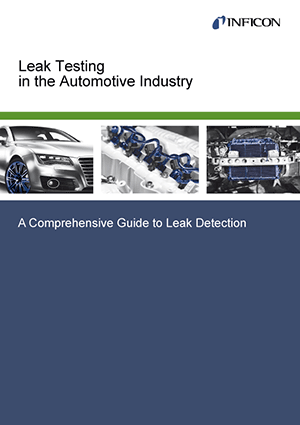Avoiding Pitfalls When Selecting a Leak Detection Method
For vehicle and car manufacturers it is important to select which testing method is best suited for each use case in their production and which method offers the best cost-to-benefit ratio. This month we focus on chapter 1 of the INFICON e-book, “Leak Testing in the Automotive Industry” and the limitations of water bath and pressure decay testing in automotive component testing.
Water Bath and Pressure Decay at their Limits
Often water bath testing is used because bubble testing seems to be so intuitive. However, in many cases water bath testing does not offer sufficient sensitivity for the automotive component being tested. Another problem: In many cases, air may escape from the leak, but due to the complex geometry of the part it cannot detach from the surface and actually form a bubble. In real world applications, neither pressure decay nor vacuum decay testing offer a better sensitivity than water bath testing, the detection limit is always in the range of 10-3 mbarl/s (atm cc/s). Very often the accumulation method proves itself as the ideal match for these components. It uses helium as tracer gas, detects small leak rates down to 5∙10-6 mbar∙l/s (atm cc/s) at best, and only needs a simple, low cost accumulation chamber instead of a vacuum system.
The new INFICON e-book, “Leak Testing in the Automotive Industry: A Comprehensive Guide to Leak Detection,” is designed to help you avoid possible pitfalls when selecting a leak detection method for your particular application.
Download the complete comprehensive guide to leak detection, free of charge, at http://www.inficon.com/automotiveindustry-ebook.
